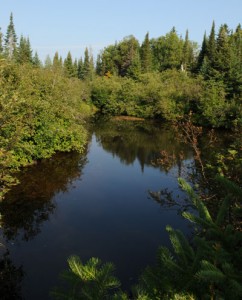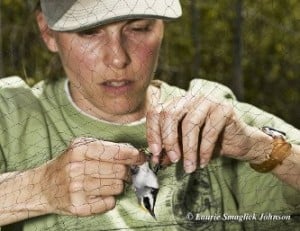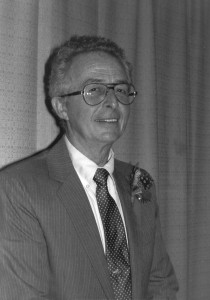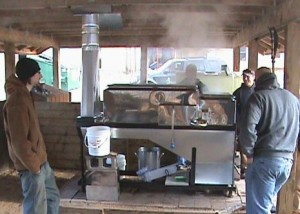 During my days at da Tech, I had my own “secret spot” down on the Otter River. I can close my eyes and visit it still, even after 53 years.Here’s an excerpt from my book, Stops Along the Way, which I wrote several years ago describing it:
During my days at da Tech, I had my own “secret spot” down on the Otter River. I can close my eyes and visit it still, even after 53 years.Here’s an excerpt from my book, Stops Along the Way, which I wrote several years ago describing it:
The Otter River is best described as a happy little stream. Its rapids didn’t roar, they cheerfully chortled. It didn’t resonate with power; it just hummed a pleasant tune. No need for mountain leveling heroics here, the Otter fit comfortably on the land. A little sun-warmed gravel bar here, a cool, shady stretch through the tag alders, a long, melodious riffle where it carved around the base of a balsam covered ridge.
Then there was the color of the water. The beer commercials would have you believe that Upper Michigan was part of the “land of sky-blue waters,” The Otter River was not blue. In the slower, deeper pools, it was the color of the clearest, finest tea you could imagine. Indeed, it was tea, steeped in the countless bogs that were the source of its waters. But it had clarity, without any trace of opacity. On the shallow riffles, where the water was tossed and aerated, it took on a distinct golden hue.
The Otter was almost a textbook trout stream. It had deep runs that held brook trout. There were deep, still pools with lots of woody debris where the big brown trout lay. The riffles held lively rainbow that rocketed skyward as soon as they felt the sting of the hook.
One weekend I looked ahead to where a sandbar stood high and dry, part way across the river. Even from a distance, it was obvious there were boot tracks crossing the bar. My heart sank; there was a trespasser in Eden. As I waded up to the bar, I cursed the gods for allowing this injustice. When I got there, I was pleasantly surprised. The tread pattern of the boots that made the tracks was clearly visible in a few locations, and I realized the tracks were mine made the week before. The world was right once more.
Ron Sadler
Forestry ’57

 tions of students (especially in dendrology), he was fondly nicknamed ‘Black Bob.’ He often had a sly smile on his face when students were trying to negotiate grades or just joking with him on field trips. He was one of the first faculty to receive outside funds for his work in herbicides and tree production.”
tions of students (especially in dendrology), he was fondly nicknamed ‘Black Bob.’ He often had a sly smile on his face when students were trying to negotiate grades or just joking with him on field trips. He was one of the first faculty to receive outside funds for his work in herbicides and tree production.”